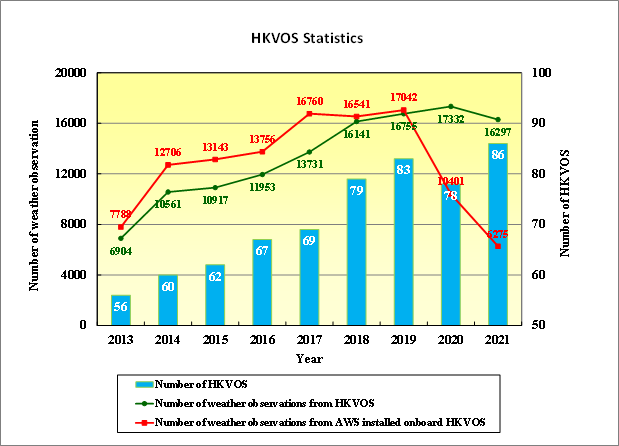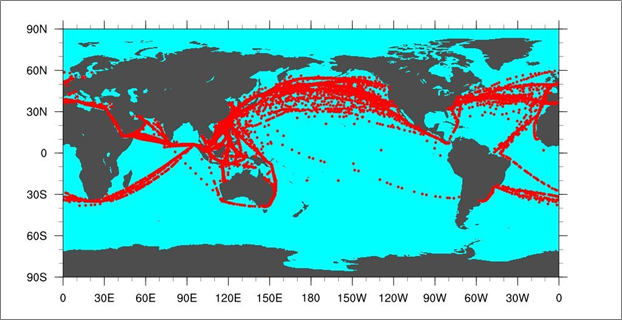New classification of Voluntary Observing Ships
The Voluntary Observing Ships (VOS) scheme is one of the core ocean observing programmes of the Ship Observations Team (SOT) under the framework of the Global Ocean Observing System (GOOS), a global collaborative platform for sustained observations of the ocean. Under the VOS scheme, a port meteorological officer (PMO) is appointed by the National Meteorological Services (NMS) to recruit vessels on the basis of the willingness of the ship crew to perform regular weather observations over the route of the ship. The weather observations made by the ship crew usually transmit to NMS in near real-time mode at fixed time intervals per day (e.g. 6-hour intervals at 00, 06, 12 and 18 UTC) to facilitate marine weather analysis for formulation of weather forecasts and issuance of weather warnings. Depending on the meteorological equipment and facilities equipped onboard the vessel, the PMO would decide which class of the VOS is assigned to a new recruited vessel. There is a total of ten VOS classes specified in the publication of the World Meteorological Organization, WMO Pub47 (code table 2202), branched from three main classes, namely selected ships, supplementary ships and auxiliary ships.
The classification of ships under the VOS scheme has recently been reviewed by the VOS Panel of Ship Observation Team (SOT) and reduced to the following three main classes:
i. NMS Operated: Ships that are recruited by a NMS which also supplies the necessary observing instruments, sensors and equipment (VOSCLim + Selected + Supplementary in old classification).
ii. NMS Cooperative: Ships that are recruited by a NMS but use their own instruments, sensors and equipment (Auxiliary in old classification).
iii. Independent: Third party support ships that are not recruited by a NMS but contribute to the VOS Scheme.
The weather elements typically observed by the three classes are listed in Table 1. Although there are remote sensing and other new technologies being used in observing the ocean, VOS still play a very important role in the provision of marine observations. There was a total of around 22,600 observations contributed by a fleet of 86 VOS of Hong Kong in 2021 (Figure 1). A map of the data coverage of weather observations contributed by HKVOS in 2021 is shown in Figure 2.
Table 1. Elements observed by various classes of VOS
|
Elements |
NMS Operated |
NMS Cooperative |
Independent |
|
Present and past weather |
Y |
Y |
Y |
|
Wind direction and speed |
Y |
Y |
Y |
|
Cloud amount |
Y |
Y |
Y |
|
Cloud type and height of base |
Y |
Y |
|
|
Visibility |
Y |
Y |
Y |
|
Temperature |
Y |
Y |
Y |
|
Humidity (dew point) |
Y |
Y |
|
|
Atmospheric pressure |
Y |
Y |
Y |
|
Pressure tendency |
Y |
||
|
Ship's course and speed |
Y |
Y |
|
|
Sea surface temperature |
Y |
||
|
Direction, period and height of waves |
Y |
Y |
|
|
Sea ice and/or icing |
Y |
Y |
Y |
|
Course of ship over ground |
Y |
||
|
Ship's ground speed |
Y |
||
|
Ship's heading |
Y |

Figure 1. Number of weather observations contributed by HKVOS and number of ships in HKVOS fleet from 2013 to 2021.

Figure 2. Data coverage of weather observations contributed by HKVOS in 2021.
Chow Chi Kin